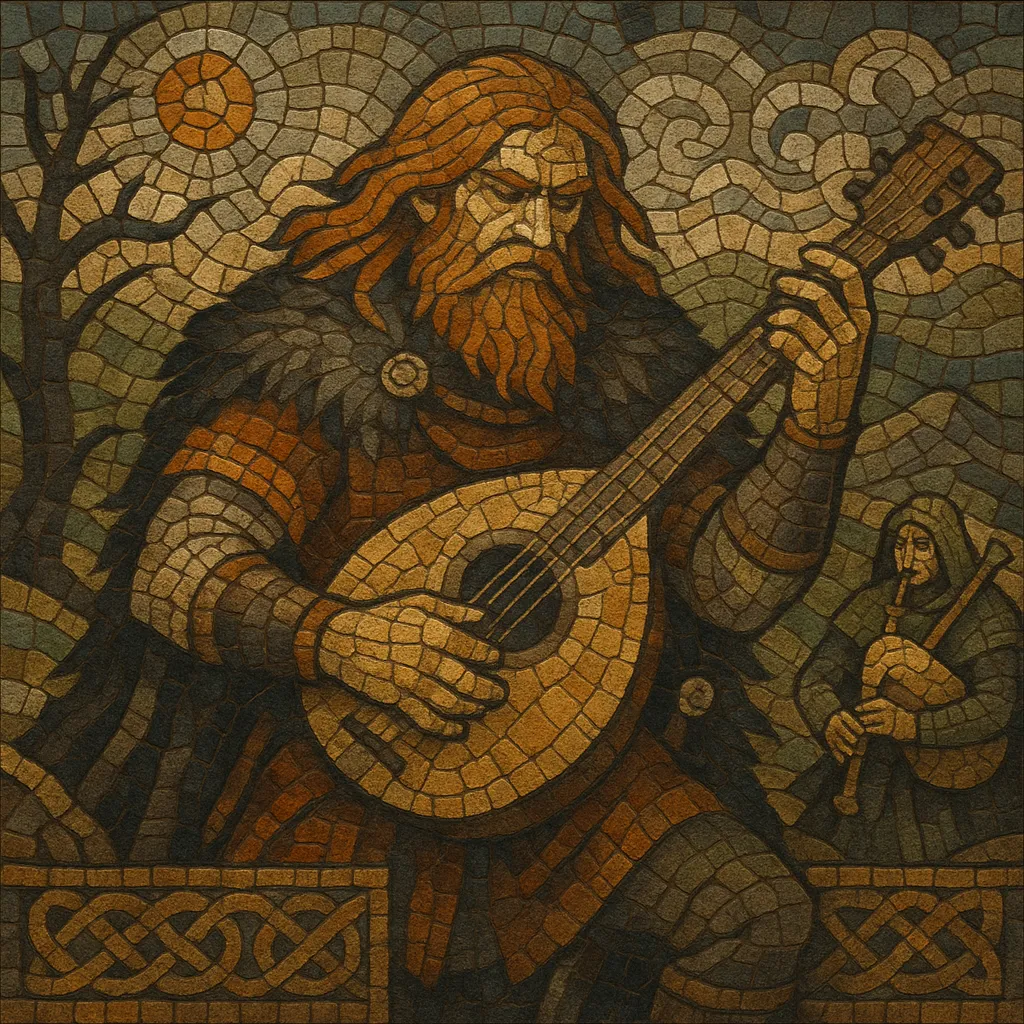Folk metal blends the power and riff-driven intensity of heavy metal with melodies, instruments, scales, and storytelling traditions from regional folk music. Typical arrangements combine distorted guitars, bass, and drums with fiddles, flutes, whistles, bagpipes, accordions, hurdy-gurdies, bouzoukis, and other traditional instruments.
Bands often draw on myth, history, and local folklore for lyrical themes, ranging from epic sagas and battle hymns to drinking songs and pastoral ballads. The style spans a spectrum from aggressive and blackened approaches to upbeat, danceable, and festive moods, making it one of metal’s most diverse and regionally distinctive subgenres.
Folk metal crystallized in the early 1990s, with the United Kingdom frequently cited as the birthplace. Skyclad, formed by ex-Sabbat vocalist Martin Walkyier, released “The Wayward Sons of Mother Earth” (1991), widely regarded as a foundational folk metal album. Around the same time, Ireland’s Cruachan began merging Celtic folk and metal, while continental Europe saw a parallel rise of bands combining medieval and regional folk instrumentation with metal frameworks.
Finland became a major engine for the style. Bands such as Finntroll, Korpiklaani (evolving from Shaman), Ensiferum, Moonsorrow, and Turisas each emphasized different facets—from humppa-influenced party metal to expansive, epic songcraft. Germany fostered a related medieval/folk metal stream (e.g., In Extremo, Subway to Sally), and Eastern Europe and Russia (e.g., Arkona) brought Slavic folk scales and instruments into the mix. This era also saw festival circuits and tours (e.g., Paganfest) that helped standardize the genre’s live aesthetics and audience community.
By the 2010s, folk metal had global reach and wide stylistic breadth. Bands incorporated elements from melodic death metal, black metal, and symphonic metal; others foregrounded dance-like folk rhythms and sing-along choruses. Acts from Central/Eastern Europe, the Middle East, and Latin America integrated local instruments and languages, further emphasizing the genre’s regional character. Today, folk metal remains a vibrant, festival-friendly subculture known for both cathartic heaviness and communal, celebratory energy.
Combine a standard metal core (two electric guitars, bass, drums) with live folk instruments such as fiddle/violin, tin whistle, wooden flutes, bagpipes, accordion, hurdy-gurdy, bouzouki/mandolin, nyckelharpa, kantele, or acoustic guitar. Use the folk instruments for thematic hooks, countermelodies, drones, and interludes.
Favor natural minor (Aeolian) and Dorian modes, with regional scales (e.g., Celtic pentatonic ornaments, Slavic folk intervals) when appropriate. Parallel fifths and pedal drones help evoke a rustic character. Harmonized leads (thirds/sixths) on guitars or fiddle reinforce an epic feel.
Alternate between metal grooves (straight 4/4 with double-kick, gallops) and folk dance meters (2/4 polka, 3/4 and 6/8 waltz and jig feels). Incorporate brisk tempos (120–180 BPM) for reels and battle hymns, and mid-tempo sections for anthemic choruses. Percussive accents from bodhrán or frame drums can enrich the folk pulse.
Introduce songs with a folk motif (solo fiddle, flute, or hurdy-gurdy drone), then layer in rhythm guitars and full drums. Use call-and-response between folk lead and guitar riff. Include instrumental breaks for dance-like jigs/reels, and dynamic shifts from acoustic passages to full-band climaxes to maintain narrative flow.
Blend clean, chant-like gang vocals with harsh growls or screams depending on substyle. Write lyrics around myth, legend, history, countryside life, seasonal rites, and revelry. Employ native languages or dialects to deepen regional identity and storytelling.
Give folk instruments clear spectral space (high-mid presence, careful EQ to avoid clashing with distorted guitars). Use subtle reverb to evoke hall/folk ambience. Layer doubles on choruses for a communal feel, and avoid over-quantizing folk ornamentation to retain a human, dance-like swing.


